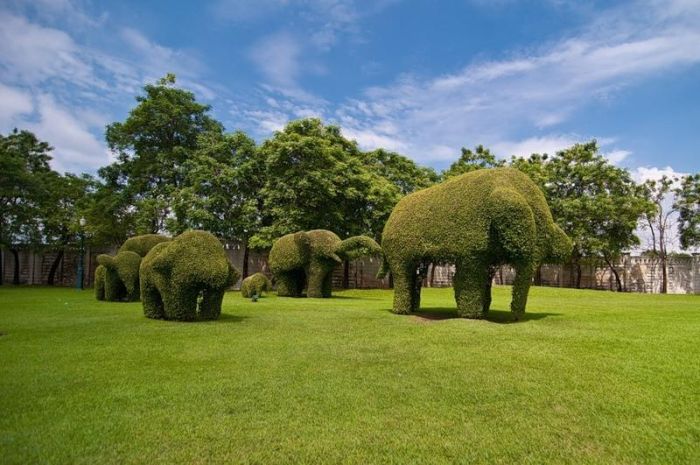|
|
Garden Topiary Plant Art
|
The clipping and shaping of shrubs and trees in China and Japan have been practised with equal rigor, but for different reasons. The goal is to achieve an artful expression of the "natural" form of venerably aged pines, given character by the forces of wind and weather. Their most concentrated expressions are in the related arts of Chinese penjing and Japanese bonsai.
Japanese cloud-pruning (illustration) is closest to the European art: the cloud-like forms of clipped growth are designed to be best appreciated after a fall of snow. Japanese Zen gardens (karesansui, dry rock gardens) make extensive use of Karikomi (a topiary technique of clipping shrubs and trees into large curved shapes or sculptures) and Hako-zukuri (shrubs clipped into boxes and straight lines).
• Renaissance topiary
Since its European revival in the 16th century, topiary has been seen on the parterres and terraces of gardens of the European elite, as well as in simple cottage gardens. Traditional topiary forms use foliage pruned and/or trained into geometric shapes such as balls or cubes, obelisks, pyramids, cones, or tapering spirals. Representational forms depicting people, animals, and man-made objects have also been popular.
|
|









